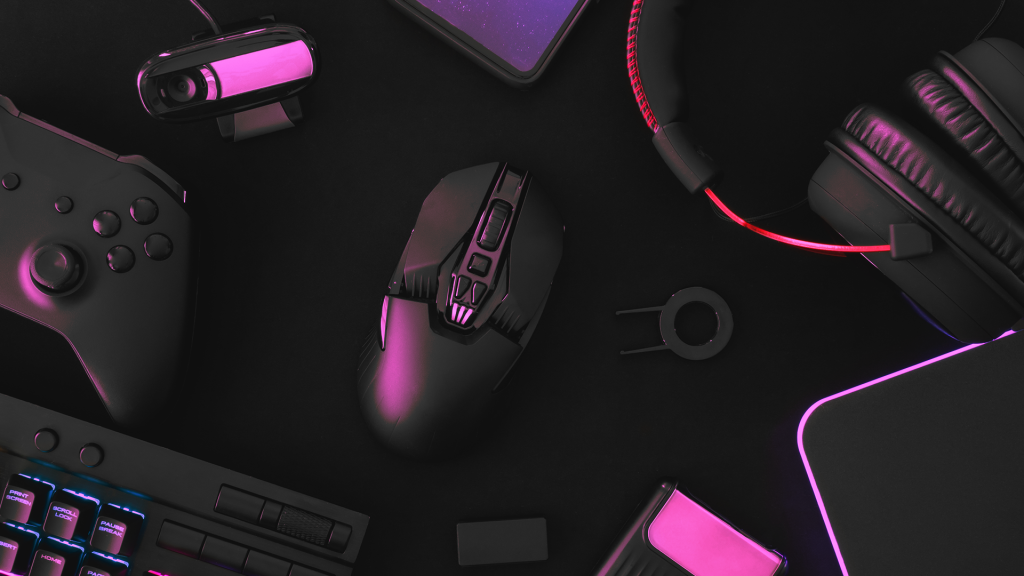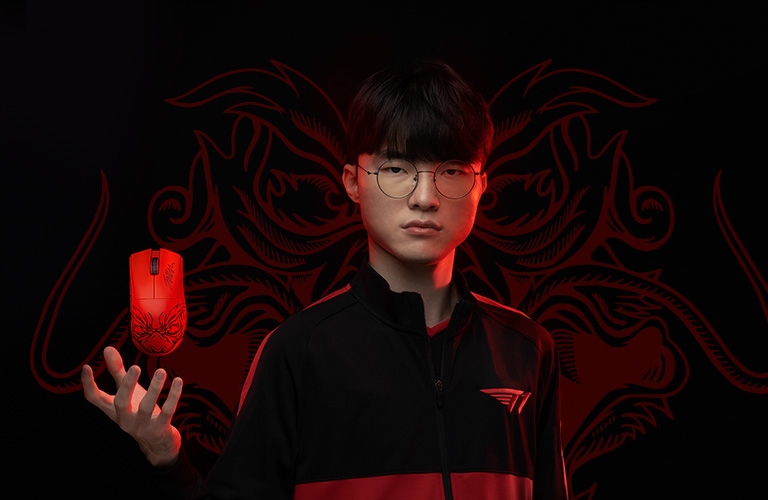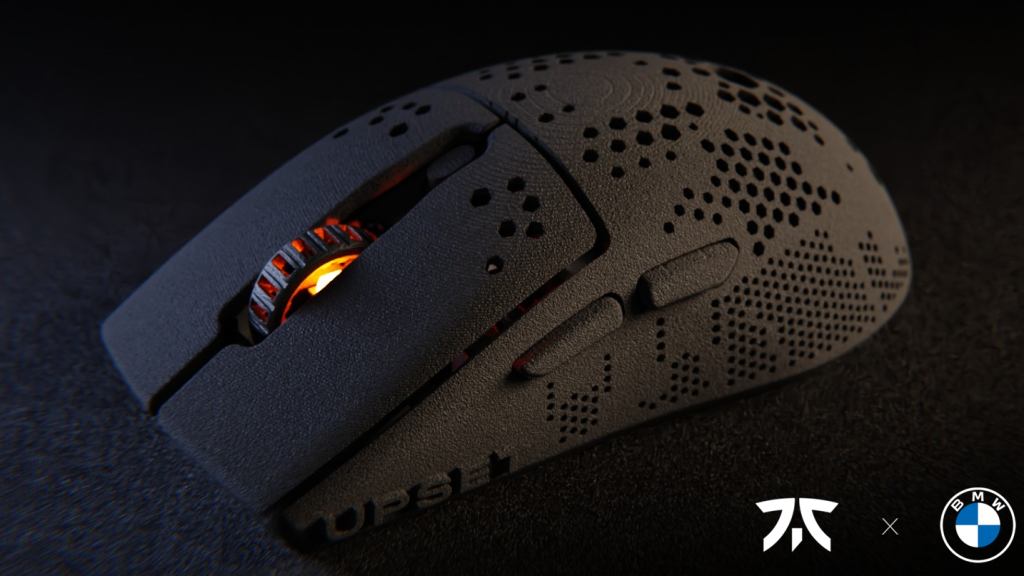
Almost every NBA player’s dream, it seems, is to one day have their own signature shoes. Just take a look at the feet in any basketball game and you will see dozens of different signature models. It’s not just basketball: musicians release signed instruments, and today content creators often have their own lines of drinks, merchandise, and hardware.
Now, professional esports players are getting in on the action. Esports Insider spoke to those leading the charge, including Razer, Fnatic and Logitech, to get an inside look at the growing — and potentially lucrative — trend.

Similar to custom guitars or sneakers, gaming peripheral brands are increasingly developing entirely new products custom-made for professional players, or adapting existing products to incorporate players’ designs. In a sign of that trend, Mouseskins, a business that offers a tailored service to players seeking custom mice, recently won Esports Insider’s startup pitch investment competition The Clutch.
Custom or “signature” peripherals vary according to the player and the situation at hand. Lee ‘Faker’ Sang-hyeok, arguably League of Legends’ biggest star player, has a custom version of Razer’s DeathAdder V3 Pro mouse. Meanwhile, Logitech created a unique mouse shape with Shroud, and SteelSeries has worked with esports teams in the past to create mice featuring their logos. Fnatic has created custom mice for every one of its League of Legends players.
Fans of esports players are, just like sports fans, interested in buying gear that is endorsed or co-created by their favourite players. From a business perspective, it makes sense for hardware brands to capitalise on the fact that players have massive followings to tap into. Combining the two, you get a unique product that fits somewhere between off-the-shelf products and ultra-premium devices.
But how exactly these custom peripherals are designed and marketed depends on many factors, such as the size of the consumer base, the size of the brand, the size of the star — and the size of the price tag attached.
Razer and Faker: A better DeathAdder

Faker has used a DeathAdder mouse since the early days of his career. Khang Thai, Razer’s Senior Manager for Global Marketing in Esports, said the idea to create something custom for Faker came to fruition when Razer re-signed him as a brand ambassador in 2021.
The project itself took several months, from the early stage to testing and release, and the mouse was well-received by Faker fans. Thai said sales were strong enough that inventory was sold out in several markets at launch — a sure sign that there is consumer demand for this kind of product.
The mouse itself is actually not very different from the regular DeathAdder V3 Pro. Razer’s flagship esports mouse is a no-frills, no-RGB wireless machine, and the Faker one is the same. The main difference is the design, which is now red and features a custom graphic co-developed with the player.
But not everyone can sell out inventory on the basis of a custom graphic. Thai said there are “not a lot of opportunities like this” — only a couple of names in esports have the reputation that Faker has.
“Truthfully, to create a custom mouse takes a lot of effort and resources to produce, and there are few legendary, household names like Faker,” Thai added. “So it takes a unique condition to pursue projects like our DeathAdder V3 Pro Faker Edition.”
Logitech and Shroud: A custom shape

With Logitech and Michael ‘shroud’ Grzesiek, the situation was a bit different. Contrary to Razer’s approach, Logitech worked extensively with Shroud to develop all parts of the mouse. Brent Barry, Head of Marketing for Logitech G PRO Series, said that Shroud selected the Logitech G303 mouse as a starting point because he used it during his esports career, and then modified it to his taste.
“We had many in-depth sessions on different aspects of the design,” Barry said. “We did a lot of back and forth with him. It was all done during the COVID lockdown, so we met on video calls and regularly shipped new samples and design tools to each other.”
Yet for Logitech, this requires a lot of resources, from the design to production, making it expensive for a product that caters to a specific niche of people who happen to like both Shroud and the unique shape of the mouse.
Barry added that the company generally takes all the inputs provided by pro players into account when creating new products, such as their Pro X Superlight mouse line, but that this is much harder when working with a single player.
“A lot of work goes into building a product with pro players and making sure we get it right with a player like Shroud is very time-consuming. Shroud is very tech-savvy and understands how he uses the mouse and what he needs to perform at his peak — many players don’t.”
Fnatic: using their players to develop gear

Esports organisation Fnatic approaches gear in a different way. The company acquired peripherals brand Func in 2015 and is one of the rare esports teams that produces its own branded lineup of peripherals, including mice, keyboards, and headsets.
Of course, you will rarely see a Fnatic player use anything other than their in-house products — but that might be because they are tailored to their needs. Kevin Xu, Product Lead for Fnatic Gear, explained that the Fnatic Gear team asks Fnatic’s pro players for input at every stage of new product development. This means that Xu and his team discuss the ergonomics of products prior to creating product moulds and work with players on new concepts of products. Xu said Fnatic Gear had created around 50 3D-printed shapes of mice in 2022 alone.
Fnatic also worked with BMW’s Designworks department to create a 3D-printed mouse unique to each player, which it supplied to the organisation’s League of Legends team.
Similarly to Logitech and Razer, Fnatic has also created custom-branded mice in the past with individuals, like pro player Rekkles and content creator Anomaly. However, these collaborations require far more work than most people realise, Xu said. Many players have talent agencies and representatives that the company must work with.
“Additionally, being a smaller entity, we face the challenge of high minimum order quantities [MOQs] set forth by the supplier. For big and small brands, the risk of holding large inventory is becoming an increasing problem,” he explained. “Quantity is a problem with designing custom products because the more custom you get, the less mainstream the product may become. This may appear in ergonomics or artwork design.”
Xu went on to say that most brands prefer launching black & white mice with shapes that can appeal to a wider market share and minimise risk. Meanwhile, talent with signature mice often wants to try something a little riskier, which involves new product development expenses as well.
Fnatic’s mission is to create hardware that is similar to Nike and other sports brands, where every player has their own custom, adapted tool to work with — a process, Xu explained, that works as follows.
“We start by taking a detailed 3D scan of their hand, print out a rough shape, and then our industrial designers sit down with them to gather vital feedback to improve the next print. Eventually, the players will have a mouse tailored specifically for them, solving any issues they may have had with their previous mouse. This will be the end game of mice for most players and hope we can bring some options to market before the end of the year.”
A growing market segment?
Creating a custom lineup of gaming hardware is expensive, not just for smaller companies, but even large ones like Logitech. The effort of having a custom mouse made for a specific player needs to be offset by strong sales, a difficult task for a niche product. This, in turn, leaves a lot of peripheral manufacturers cautious about creating an all-new product.
However, the story of VALORANT player TenZ and his collaboration with Finalmouse proves that players with large followings can provide high-volume sales in the peripheral space. Finalmouse raked in over $7m (~£6.4) in sales from the TenZ mouse collaboration in one day, a feat others are trying to replicate.
The peripheral brands Esports Insider spoke to indicated there is a will to create more collaborative products like this, be it a custom-painted and branded mouse or something built from the ground up to a player’s exact specifications.
The demand is there, that is for sure. Mixing that demand with the influencer-level power of professional players may be a potent recipe for success.
